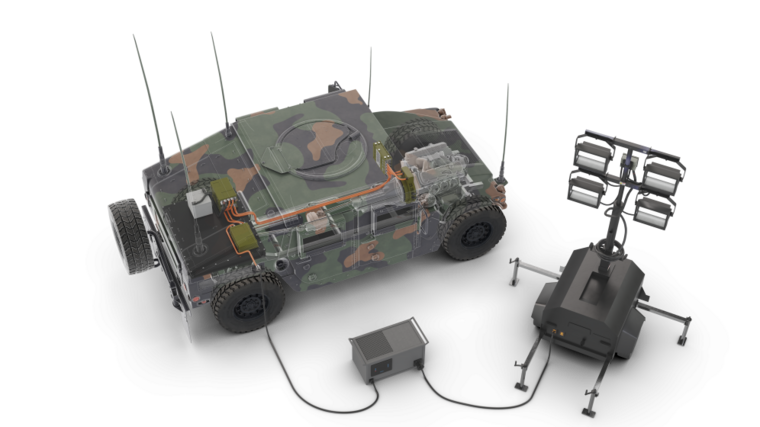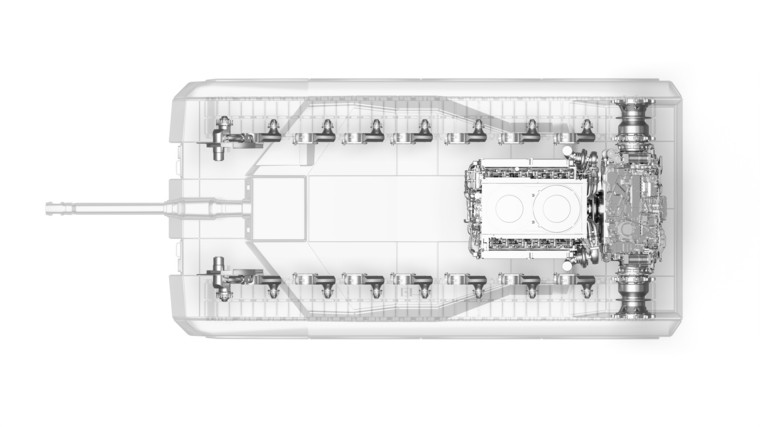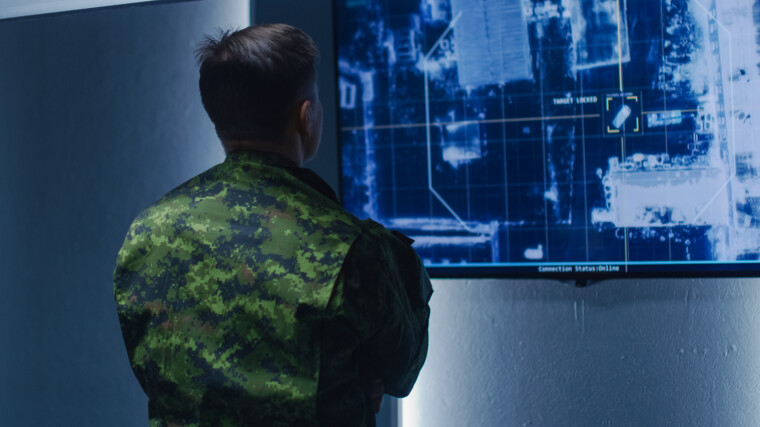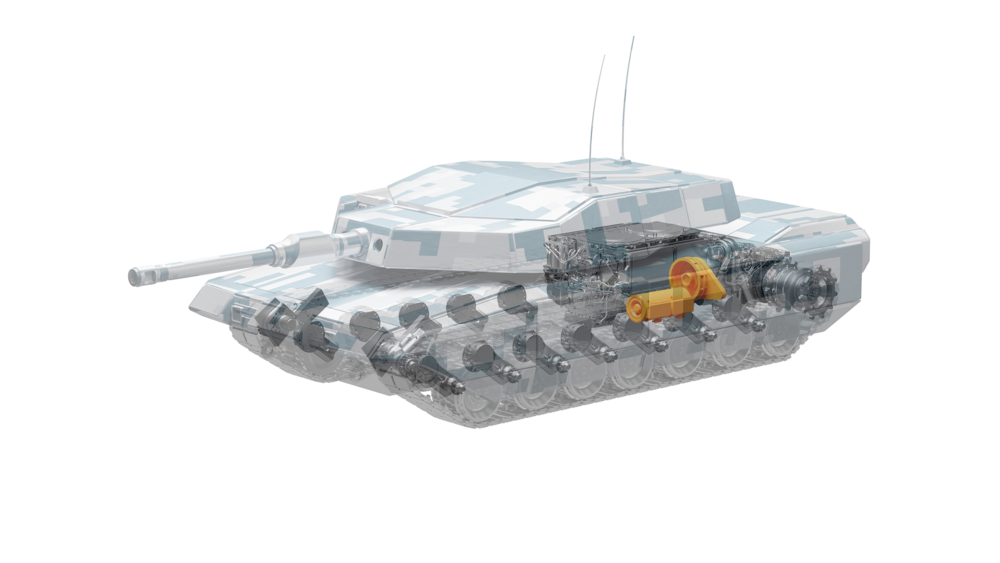Tracked vehicle transmissions fulfill multiple critical roles beyond mere power transfer and gear shifting; they are integral to providing precise steering and braking capabilities. A notable advancement in this domain was the introduction of hydrostatic-hydrodynamic steering systems by RENK, marking a significant leap in transmission Fahrzeuggetriebe Ein Fahrzeuggetriebe passt Drehmoment und Drehzahl an und überträgt die Motorleistung auf die Antriebsräder. reliability and performance for military applications.
Following the strategic acquisition of Magnet Motor, a company based in Starnberg renowned for its expertise in electrification and hybrid systems tailored for military vehicles, the RENK Group has significantly expanded its technological repertoire. This merger not only broadened RENK's understanding of current and emergent mobility paradigms but also cemented its position at the forefront of transmission Fahrzeuggetriebe Ein Fahrzeuggetriebe passt Drehmoment und Drehzahl an und überträgt die Motorleistung auf die Antriebsräder. innovation.
In the wake of integrating a spectrum of electrification solutions, a framework for categorizing Transmission Ability (TA) levels has been established. This framework enables a systematic differentiation among transmission Fahrzeuggetriebe Ein Fahrzeuggetriebe passt Drehmoment und Drehzahl an und überträgt die Motorleistung auf die Antriebsräder. systems based on their degree of electrification, ranging from mild hybridization to full electric propulsion, thereby offering a scalable approach to enhancing vehicular mobility, efficiency, and operational versatility in military contexts.
Overview of the transmission ability levels:
- TA 0 represents the standard mechanical transmission Fahrzeuggetriebe Ein Fahrzeuggetriebe passt Drehmoment und Drehzahl an und überträgt die Motorleistung auf die Antriebsräder. system, serving as the foundational technology for vehicle mobility.
- TA 1 integrates generators for Power Take-Off (PTO), enabling silent watch capabilities through power generation for accessories.
- TA 2 introduces electric steering drive systems, utilizing x-by-wire technology for enhanced steering precision.
- TA 3 combines electric steering with propulsion drives, transitioning towards efficient hybrid propulsion systems.
- TA 4 incorporates advanced sensors and artificial intelligence, evolving into a smart transmission Fahrzeuggetriebe Ein Fahrzeuggetriebe passt Drehmoment und Drehzahl an und überträgt die Motorleistung auf die Antriebsräder. system with autonomous capabilities.
Looking ahead, the Transmission Ability (TA) framework is poised for further evolution, incorporating advanced options such as interconnectivity and diagnostics. These enhancements will lead to specialized sub-levels within the existing TA structure. For instance, a future level like TA 2id would signify a hybrid system enhanced with interconnectivity features, such as seamless integration with the vehicle’s suspension Federungssysteme Federungssysteme dämpfen Stöße und Schwingungen, die beim Fahren auf unebenem Gelände entstehen. , final drive, or track tensioner systems. These developments aim to unlock additional vehicle capabilities, making military vehicles more adaptable, efficient, and capable in a variety of operational contexts.
High-quality power supply and silent watch mode
With adding a military graded PTO solution, battery pack and power management various advantages are available. Not only the increasing demand of internal electronic system but also external demands can be satisfied.
Furthermore, the vehicle can shift into silent watch, meaning a monitoring mode with the main engine switched off the reduce the visibility of the vehicle to safe fuel and protect the crew.

A decade ago, the power demands for electronic systems within tanks were approximately 30kW. Today, the power requirements for modern main battle tanks have escalated to around 230kW, with expectations for continued increase. This surge not only reflects the growing sophistication of onboard electronics but also introduces the need for a specific quality of power supply.
TA 1 also facilitates the use of the vehicle as a mobile power source for external accessories, such as powering a small encampment. This negates the necessity for a dedicated external power generator, allowing the vehicle itself to provide the required power efficiently.
Furthermore, the TA 1 system enables enhanced mission capabilities such as the silent watch. With a sufficiently dimensioned battery unit, the vehicle’s electrical systems can function independently of the main engine. This capability allows for a transition to a covert monitoring mode, presenting several strategic advantages:
- A significantly reduced heat signature from the engine and exhaust gases, complicating missile targeting and detection.
- A minimized noise output, enhancing operational stealth.
- Reduced vibration and noise exposure for the crew, leading to better long-term focus and operational efficiency.
Drive-by-wire included for easy integration and usability.
In the dynamic realm of military advancements, drive-by-wire technology emerges as a pivotal innovation, significantly enhancing vehicle agility, crew safety, and mission adaptability. By replacing conventional mechanical controls with sophisticated electronic systems, drive-by-wire technology offers a leap forward in vehicular control and functionality.

The shift towards electronic controls streamlines vehicle manufacturing and maintenance processes. By minimizing the reliance on mechanical components, drive-by-wire systems facilitate a more straightforward integration of vehicle systems, resulting in reduced production costs, lower maintenance requirements, and improved reliability. This simplification not only enhances the safety profile of the vehicle by reducing the potential for mechanical failures but also contributes to a lighter and more agile platform.
Drive-by-wire is a cornerstone technology for the development of remote-controlled and autonomous military vehicles. This capability is indispensable for conducting operations in high-risk environments or scenarios requiring precision and reliability beyond human capabilities. From remote-controlled reconnaissance missions to fully autonomous logistical support, drive-by-wire technology lays the groundwork for the next generation of unmanned military operations, promising significant strategic advantages in terms of operational risk reduction and efficiency.
Drive-by-wire technology revolutionizes the human-machine interface (HMI), enabling the design of adaptable and intuitive control systems. This flexibility allows for the implementation of multi-driver interfaces within the vehicle, ensuring that control can be transferred between crew members with minimal disruption. In critical situations where the primary operator is unable to continue, this redundancy safeguards mission continuity and enhances vehicle operability under duress.
Hybrid propulsion to protect the crew and mission flexibility.
The introduction of hybrid drive systems Hybridantriebssysteme Hybridantriebssysteme kombinieren verschiedene Energiequellen, meist Verbrennungs- und Elektromotoren, um Antriebskraft effizient bereitzustellen. to military vehicles represents a significant leap in operational capability and survivability. By combining traditional combustion engines with electric motors, hybrid technology offers a versatile power solution that enhances mobility, stealth, and efficiency in various tactical scenarios.
From instantaneous power deployment to silent and efficient maneuvering, TA 3 represents a strategic advantage in modern warfare, aligning with goals for increased mobility, survivability, and operational flexibility.

In critical situations where every second counts, the ability to mobilize instantly can be the difference between survival and vulnerability. Hybrid systems address this need with an "Alert Boost" feature, allowing vehicles to move swiftly on electric power while the main diesel engine powers up. This capability is especially crucial during silent watch operations, ensuring rapid response without the delay associated with starting conventional engines.
Navigating through exposed terrain under enemy fire demands quick evacuation to safer positions. The hybrid drive’s "Hot Boost" mode provides vehicles with short bursts of increased power and acceleration, leveraging the electric system to augment the drivetrain. This instant power boost is invaluable for swift maneuvering in high-risk environments, offering a tactical edge when agility is paramount.
Hybrid technology also enables silent maneuvering, a critical advantage in reconnaissance missions and stealth operations. Vehicles can be driven or positioned with minimal noise and heat signature, facilitating covert movements and reducing detection risk. Beyond tactical benefits, this capability allows for engine-off operations in sensitive environments, such as indoor spaces or during transportation, reducing wear on the engine and mitigating environmental impact.
Specifically, during silent watch operations or when in alert mode, the "Alert Boost" feature allows for the main engine to be shut down without compromising readiness or response capability. Traditionally, idling engines in such modes consume a substantial amount of fuel without contributing to mobility or operational success. Hybrid systems circumvent this issue by maintaining readiness through electric power, enabling vehicles to accelerate and maneuver swiftly away from threats without the need to start from a cold engine.
Recuperation during brake maneuvers charge the battery and the gained electric energy can be directly used for propulsion or powering systems. Either way, the electric energy must not be produced via the generators and burning the equivalent fuel. Thus increase the energy efficiency, operation range and reduce therefore emissions.
The standard dimensioning of a main engine for a standard tank is focused on the maximum demanded power. Around 80-90% of the lifetime a tank is driving far beyond that extremes and for standard situation the engine is overengineered. Thus the engine is much bigger, heavier and not working in the efficiency sweet spot most of the time.
When using REX in a
Powerpack
Powerpacks
Ein Powerpack ist eine kompakte Antriebseinheit, die Motor, Getriebe und weitere Systeme in einem Modul vereint.
, the main engine can be optimized for the standard situation, as the electric drive kick in for the extreme demands. By this the engine can be optimized and work in the proper sweet spot.
Intelligent mobility solution for
TA Level 4 represents the frontier of military vehicular technology, where the integration of advanced sensors, artificial intelligence (AI), and machine learning algorithms with transmission and hybrid drive systems Hybridantriebssysteme Hybridantriebssysteme kombinieren verschiedene Energiequellen, meist Verbrennungs- und Elektromotoren, um Antriebskraft effizient bereitzustellen. creates a new paradigm of intelligent drive systems. These enhancements not only augment the vehicle's operational capabilities but also introduce a level of autonomy, situational awareness, and decision-making precision previously unattainable.

Equipped with state-of-the-art sensors and AI, vehicles at this level can autonomously navigate through complex environments, identifying and avoiding obstacles or threats without human intervention. This capability significantly reduces the cognitive load on operators, allowing them to focus on mission-critical decisions while the vehicle handles navigation and obstacle avoidance, enhancing mission efficiency and safety.
AI-driven systems continuously analyze the vehicle's operational data to predict maintenance needs and identify potential failures before they occur. This predictive maintenance capability ensures optimal vehicle readiness and significantly reduces unexpected downtimes, extending the lifecycle of critical components and saving resources on repairs and replacements.
By integrating sensors and AI, TA Level 4 vehicles achieve unparalleled situational awareness, processing vast amounts of data from the surrounding environment to inform tactical decisions. This real-time information fusion enables the vehicle to react dynamically to changing conditions, providing tactical recommendations to the crew or autonomously adjusting its posture to maximize survivability and mission success.
The AI systems optimize the use of hybrid drive capabilities for energy efficiency and tactical advantage, dynamically switching between power modes based on mission requirements, terrain, and threat analysis. This ensures that the vehicle operates at peak efficiency, conserving fuel for extended operations, and exploiting silent maneuvering capabilities for stealth engagements or exfiltrations.
TA Level 4 vehicles can operate in concert with unmanned aerial vehicles (UAVs), unmanned ground vehicles (UGVs), and other intelligent systems, sharing data and making coordinated decisions. This collaborative capability, underpinned by AI and swarm intelligence, amplifies the effectiveness of each unit, creating a cohesive and adaptable force multiplier on the battlefield.

In case of further questions get in touch with our correspondent.
